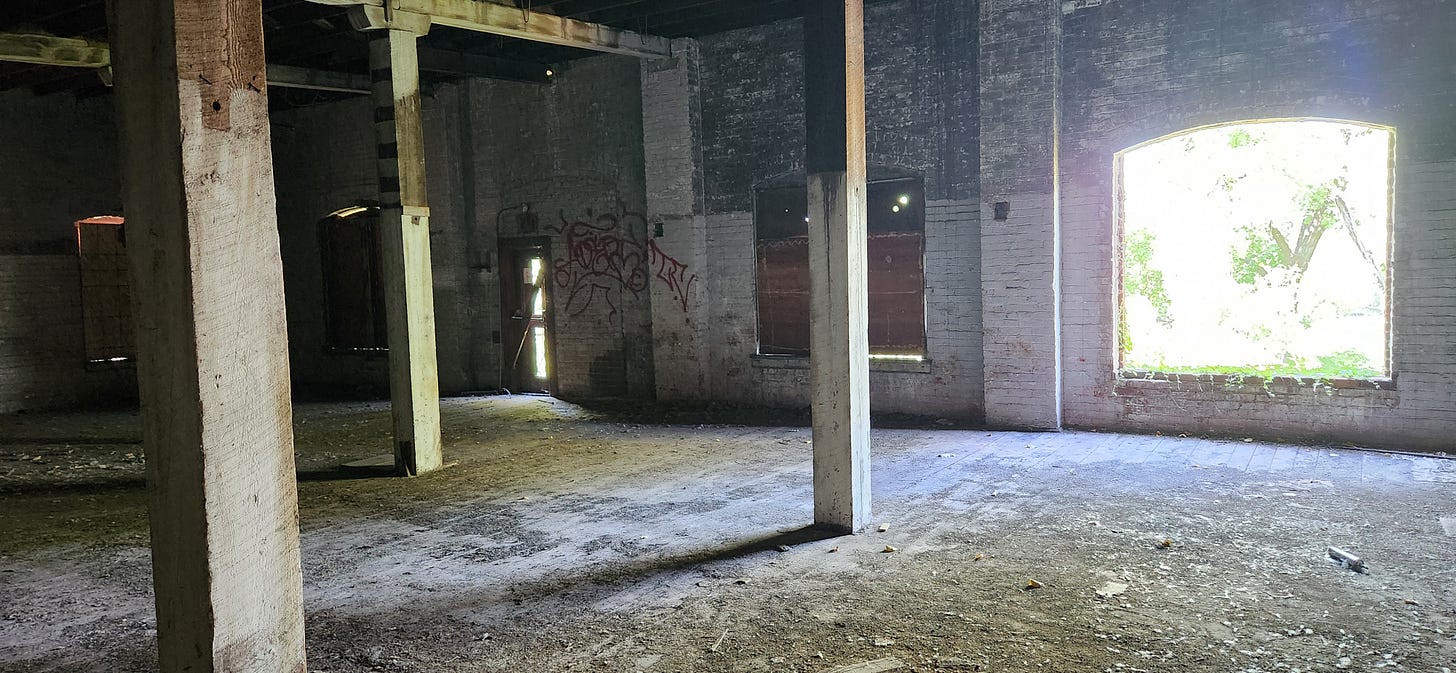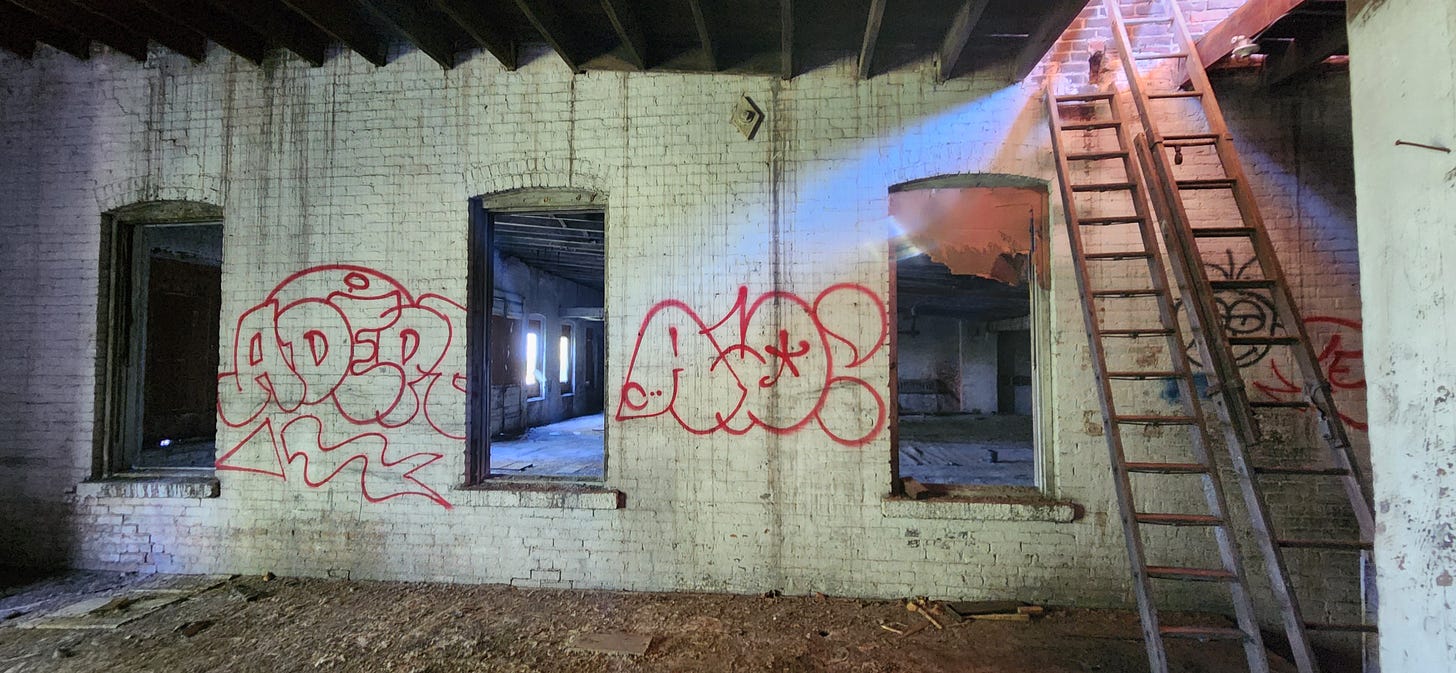On the Hudson: A Cautionary Tale of Real Estate Adventures
I was recently invited by a friend to check out a building on the picturesque shores of the Hudson River. When I first received the invite, I eagerly typed the address into my phone, but my excitement quickly turned to concern as thoughts of potential flooding crept into my mind. To my surprise, my initial glance at the flood maps indicated that this building was not in the flood zone. Intrigued, I decided to explore further, armed only with the limited pictures I could find online.
Every time I visit one of these old properties, it feels like playing a scratch-off lottery ticket. Each room I walk through is like scratching off another little area of my ticket, revealing hidden treasures and potential pitfalls. As I wandered from room to room, I looked for the right combination of ‘signs and symbols’ that would signal a winning investment. Like most scratch-off tickets, however, many property visits turn out to be just a whimsical romp through an imaginary fantasy of success that quickly evaporates into reality. This particular adventure was no different, featuring high-ceiling industrial loft apartments, stunning old wood beams, and waterfront balconies that beckoned with promises of serene sunsets and urban chic.
Our tour began with a casual conversation with the current owner. My friend, who had invited me, introduced him with glowing praise, highlighting his active involvement in the community and his numerous investments scattered throughout town. After a firm handshake, the owner stepped closer, gripping the lapels of my jacket with his thumb and pointer fingers as if to inspect my shirt. He towered over me, invading my personal space in a way that felt oddly aggressive, like some strange display of ‘alpha-male’ posturing. It’s curious how some people in real estate seem to awkwardly flaunt their egos as if they have mastered some Jedi mind trick.
Once that unnecessary drama settled, we embarked on our tour. The building was a colossal 40,000 square feet of ancient wood factory floor, practically begging for a rebirth. As we strolled through the expansive space, the owner enthusiastically pointed out the breathtaking views, but then casually mentioned that part of the building was indeed in the flood zone while the other part wasn’t. While that may have been the ‘official’ designation, I couldn’t shake the thought of the devastating floods that had ravaged the area over the last century, raising the Hudson River’s level by 25 to 30 feet on more than one occasion. A quick sleuthing session on Google revealed that NOAA has all the historical flood data you could ever need. This building, I realized, was at best 20 feet above the river’s level. Properties in flood plains can quickly become uninsurable, and with climate change looming, the risk of future floods was only likely to increase. But I didn’t learn this critical tidbit of flood wisdom until I returned home.
Next, we ascended to the roof for a bird’s-eye view of the surroundings. From up high, I could see that many nearby structures had undergone revitalization, transforming into trendy new spaces. However, they all seemed to be reimagined old gas stations or auto repair shops. The problem with these former businesses is that they often left behind a toxic legacy, polluting the soil and creating a hazardous mess for future owners to clean up. While I pondered the potential environmental issues plaguing the neighboring buildings, I still had yet to uncover what secrets this particular property held.
As our tour continued, we descended into the depths of the building—the basement. The moment I stepped down the stairs, I was hit by a pungent smell of fuel oil or some other petroleum product. This was particularly odd, given the owner’s claim that preliminary environmental testing had found nothing amiss. When I returned home, I pulled out one of my favorite research tricks: old newspapers. Searching for the building’s address led me to a treasure trove of critical insights. I discovered multiple ads in local papers from decades past, touting a factory outlet sale. What did this factory produce, you ask? Nothing less than paint, adhesives, and asphalt products. If this place had been manufacturing such materials as late as 1978, there was no doubt in my mind that it was significantly polluted.
Driving home, I reflected on my experience. The owner, who had claimed to be a big mover and shaker in town and had an architect for a partner, was looking to exit this deal. If these so-called professionals believed this was a good investment, why were they so eager to sell? Why didn’t they just go to the bank and secure financing? When a professional developer sits on a property for years and then seeks to move on, it’s a red flag. Some investors try to pawn off their failures onto unsuspecting newbies, and this deal seemed like that old playbook.
In a moment of clarity, I recalled the owner mentioning that his “partner, the architect, changed their handshake deal from sweat equity to payment for services after they bought the building together.” That was a glaring red flag. In simple terms, one partner believed there would be enough profit in the deal, but when the reality of the project’s actual costs sank in, he quickly realized he was unlikely to receive his base rate. To ensure he got paid, he altered the deal.
Sitting in the car for a few hours alone on the road gave me the quiet time I needed to run the numbers in my head. I considered the number of units, the average rent, and the astronomical construction costs (at least $10 million). I didn’t need a calculator or a spreadsheet just yet. Over the years, I’ve learned critical metrics to benchmark deals:
R/C ratio: or Monthly Rent divided by Property Cost
Stocks have a P/E ratio (stock price divided by earnings per share), while real estate uses the R/C ratio. For most small real estate deals, any R/C over 1% indicates that this deal could yield meaningful cash flow. However, in most major U.S. cities, finding anything with a 1% R/C is rare, with the Midwest being one exception.
Another quick metric to benchmark deals is the cap rate:
Cap rate: Net Operating Income divided by Property Cost
Operating costs can vary from 30% to 40% or rents, and using rough estimates like these allows you to quickly gauge whether a property is even in the ballpark of your investment strategy. If a property has a cap rate of 7%, but you need to borrow two-thirds of the cost at 7%, it leaves you with a little over 2% return in your first year.
A quick bit of mental math landed this deal on the low end of the R/C range and the lower end of the cap rate range, as compared to other deals on the market. Such low returns can only be justified by a very low-risk deal, like purchasing brand new construction. For the building on the shores of the Hudson, the owner was facing massive construction and environmental risks, with little reward on the other side. The objective of this quick-and-dirty analysis is to quickly eliminate candidate properties.
The moral of this tale is to listen carefully and know your basic numbers: local rent estimates (use Zillow and take a guess), operating cost ratios, and ballpark mortgage rates. Let people talk and ask direct questions. Sellers of bad deals will often send you many “hidden” signals that are not so hard to decipher. Stay vigilant and may your real estate adventures be filled with more winners than losers!
If you've found value in these insights and want to continue your journey of real estate wisdom, we invite you to subscribe to The Property Alchemist.
Don't let your real estate dreams remain just dreams. Empower yourself with the knowledge and insights that can turn your investment visions into concrete reality. Subscribe to The Property Alchemist today and take the first step towards becoming a master of real estate alchemy. Your next successful project is just a subscription away!








